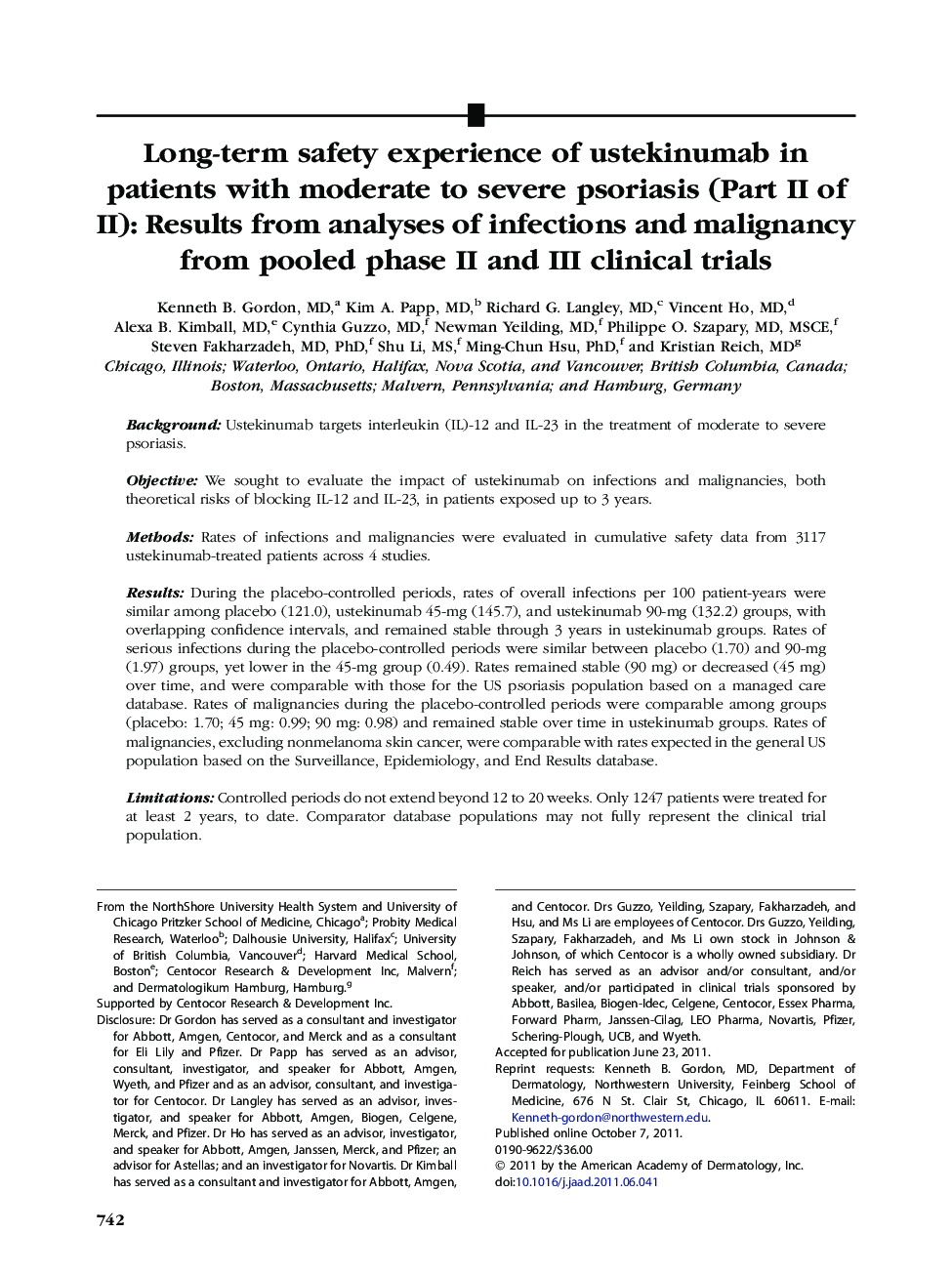| Article ID | Journal | Published Year | Pages | File Type |
|---|---|---|---|---|
| 3206691 | Journal of the American Academy of Dermatology | 2012 | 10 Pages |
BackgroundUstekinumab targets interleukin (IL)-12 and IL-23 in the treatment of moderate to severe psoriasis.ObjectiveWe sought to evaluate the impact of ustekinumab on infections and malignancies, both theoretical risks of blocking IL-12 and IL-23, in patients exposed up to 3 years.MethodsRates of infections and malignancies were evaluated in cumulative safety data from 3117 ustekinumab-treated patients across 4 studies.ResultsDuring the placebo-controlled periods, rates of overall infections per 100 patient-years were similar among placebo (121.0), ustekinumab 45-mg (145.7), and ustekinumab 90-mg (132.2) groups, with overlapping confidence intervals, and remained stable through 3 years in ustekinumab groups. Rates of serious infections during the placebo-controlled periods were similar between placebo (1.70) and 90-mg (1.97) groups, yet lower in the 45-mg group (0.49). Rates remained stable (90 mg) or decreased (45 mg) over time, and were comparable with those for the US psoriasis population based on a managed care database. Rates of malignancies during the placebo-controlled periods were comparable among groups (placebo: 1.70; 45 mg: 0.99; 90 mg: 0.98) and remained stable over time in ustekinumab groups. Rates of malignancies, excluding nonmelanoma skin cancer, were comparable with rates expected in the general US population based on the Surveillance, Epidemiology, and End Results database.LimitationsControlled periods do not extend beyond 12 to 20 weeks. Only 1247 patients were treated for at least 2 years, to date. Comparator database populations may not fully represent the clinical trial population.ConclusionsThe emerging safety profile of ustekinumab remains favorable and does not suggest increased rates of infection or malignancy through 3 years.
